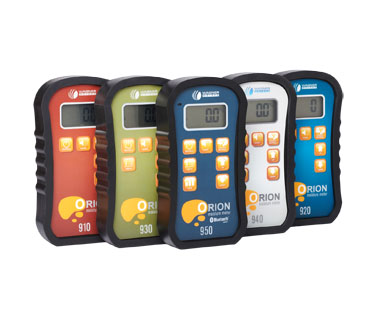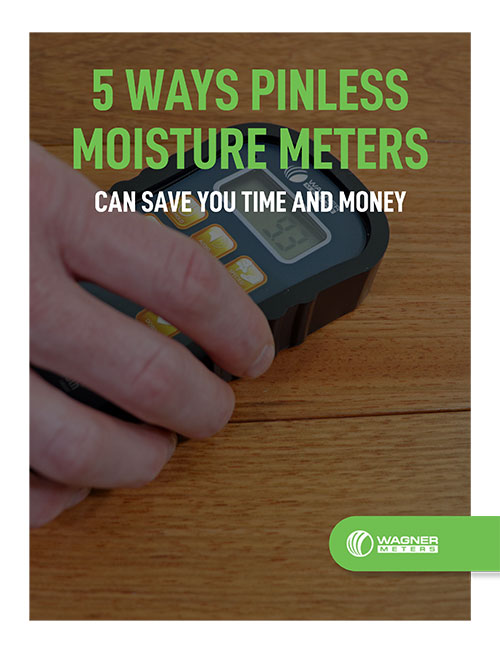How to Use a Moisture Meter – Easy Tips to Follow
A Wagner moisture meter is indispensable for professionals and DIY enthusiasts, providing accurate and reliable wood moisture measurements. With IntelliSense™ technology, you can be confident that your moisture meter gets the best performance.
This guide will walk you through the essential steps and considerations for using a Wagner moisture meter, helping you achieve top results and maintain the quality of your wood projects.

- 1. Apply Pressure
- 2. Wipe off Standing Water
- 3. Choose the Right Moisture Meter
- 4. Consider the Subfloor
- 5. Beware of Metal
- 6. Make Sure Your Meter is Calibrated
- 7. Keep Fresh Batteries on Hand
- 8. Don’t Forget Your Manual
- 9. Keep Your Meter Dry
- 10. Consider Your Wood Materials
- 11. Take Multiple Readings
- FAQs
1. Apply Pressure
Since your Wagner moisture meter is pinless, you will lay it on top of the wood to get a reading. Tip number one to get the most from your meter is to put some pressure on the meter when you lay it on the wood. About three pounds of pressure is ideal for good reading.
2. Wipe off Standing Water
Before taking wood moisture readings, wipe off any standing or visible water and allow the surface to dry for 60 seconds or more. Standing or visible water always results in inaccurate readings, regardless of the meter type. For example, pin moisture meters with non-insulated pins give highly exaggerated readings when wet wood surfaces.
Even Wagner pinless moisture meters will read slightly higher than normal, though typically less than 3 to 4%. Once the wood has been wiped and dried, Wagner meters with IntelliSense™ can give accurate readings in less time than other meters. Also, water soaking into the wood will give a higher MC reading.
3. Use an Accurate Moisture Meter
Use the proper meter for the job. If you are working strictly with woods less than 1/4″ thick, you will want the Orion® 920 or if you only use thicker stock the Orion 910 will be the right choice.
For the best of both worlds, the Orion 930 has dual depth measurements for thick and thin stocks. If you require extended data collection capabilities for quality control, the Orion 940 and Orion 950 offers data analysis functions as well with the 950 connecting to Bluetooth® and containing a built-in temperature/humidity sensor.
The right meter for the job will save you time and potential trouble.
4. Consider the Subfloor
If you are measuring MC levels in installed flooring, the meter will probably pick up moisture in the subfloor. If the subfloor is made of wood products, this probably won’t skew the readings, but concrete will give a higher reading.
5. Beware of Metal
Never check the MC of a piece of wood lying on a metal table. Instead, hold it in the air to take a reading. The reason is: Moisture meters are sensitive to anything conductive. Thus, reading on a metal table or near metal objects such as nails, staples, or metal studs renders the moisture meter ineffective, resulting in a false reading.
6. Make Sure Your Meter is Calibrated
Be careful with your meter. A Wagner moisture meter is calibrated at the factory, and although it’s extremely simple, re-calibrate the meter with the included On-Demand Calibrator. However, it could be damaged if you drop your meter or it is accidentally submerged. You should keep it on your belt loop or the provided carrying case for protection.
7. Keep Fresh Batteries on Hand
The batteries for your Wagner moisture meter are very long-lasting. However, it is always a good idea to keep spares with you. A quick switch of batteries on the job site will make a big difference in time on task.
8. Don’t Forget Your Manual
Keep the manuals handy. In addition to the operation manual, the Wagner moisture meter comes with another very useful manual that tells you the specific gravities for each wood you deal with. Be sure to check your manual to get the most from your meter. Both manuals fit nicely next to your meter in the protective carrying case.

Free Download – 5 Ways Pinless Moisture Meters Save You Time and Money
9. Keep Your Meter Dry
Be sure there is no condensation on the sensing plate of your moisture meter. Just as the surface you are measuring should be free of visible moisture, the sensing plate should also be clear.
10. Consider Your Wood Materials
Don’t forget that your Wagner moisture meter can be used to measure MC levels in plywood and OSB. Use the section in your Species Adjustment Table to set your meter to read these materials.
11. Take Multiple Readings
Having multiple moisture readings ensures you’re not making any decisions based on limited information. Obviously, the larger the piece of wood being measured, the more measurements you should take.
The same principle holds for measuring a stack of lumber. The more pieces you measure, the more confidence you’ll have to make decisions based on the readings you do have. There are often a couple of outliers in a stack of wood that you’ll want to make sure you exclude from your project.
FAQs
Can a Wagner moisture meter be used on non-wood materials?
Yes, a Wagner Orion moisture meter can be used on non-wood materials such as drywall. When using the moisture meter for non-wood materials, you need to ensure the meter is using relative mode.
How often should I calibrate my Wagner moisture meter?
You can calibrate your moisture meter as often as you’d like to. The Orions come with a calibration block making it easy to ensure it’s always calibrated.
There are 10 ways to get the most from your Wagner moisture meter. These pointers will help you use your meter trouble-free for years to come.
Ready to optimize your woodworking projects with a Wagner moisture meter? Explore our range of meters and accessories to find the perfect match for your needs. Invest in the best tool for accurate moisture readings today!
As Sales Manager for Wagner Meters, Ron has more than 35 years of experience with instrumentation and measurement systems in different industries. In previous positions, he has served as Regional Sales Manager, Product and Projects Manager, and Sales Manager for manufacturers involved in measurement instrumentation.
Last updated on June 28th, 2023



